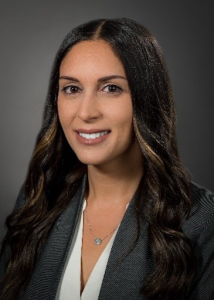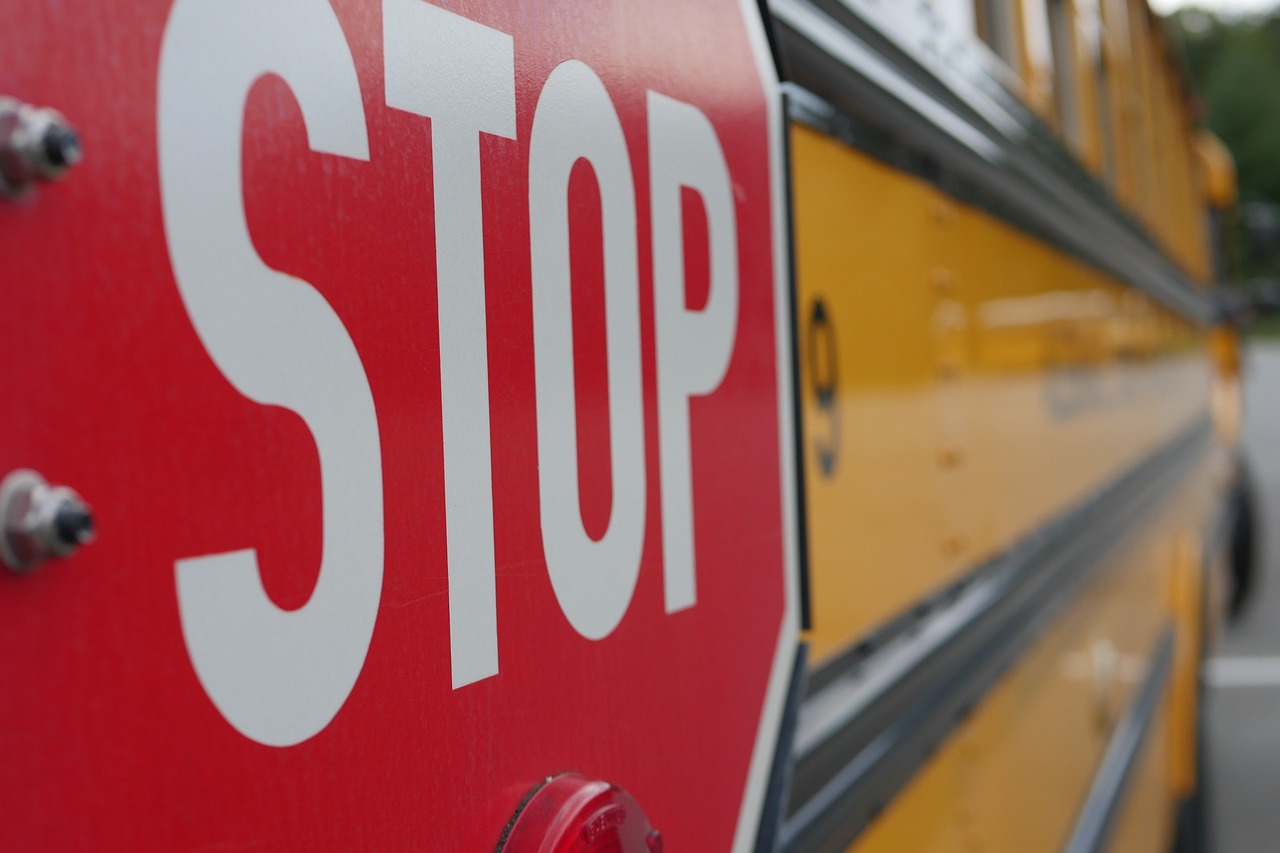K Through 2 – No Topic is Too Taboo by Rosemary McDonnell
For decades, emergency managers have been trying to find creative ways to promote messaging around personal disaster preparedness. Cheerful characters, such as Bert the Turtle, taught children and adults alike about how to respond to a nuclear detonation with catchy tunes and lighthearted animation. But how do kids learn about emergencies in the present day? Are nuanced preparedness practices—such as lockdown drills—teaching our children anything meaningful about what the threat is and how it may impact us? As the threat landscape continues to evolve throughout our nation and its history, parents are struggling to find ways to adequately prepare themselves and their children for emerging dangers, especially ones that may be difficult to fully comprehend and process, without deleterious psychological effects (sometimes almost akin to living through the emergency or disaster itself).
“Duck and Cover” Defense Poster of a 1950 movie that depicts the danger from a Soviet nuclear attack (Photo by © CORBIS/Corbis via Getty Images)
In the Cold War era, the United States formed the Federal Civil Defense Administration (FCDA), which many believe to be the beginning of a formalized emergency preparedness structure in our nation. This period of history can be categorized by an inextricable link between national defense and education. It was through the National Defense Education Act of 1958 that this relationship was institutionalized. Through this Act, bomb threat preparedness became a mandatory aspect of curriculum. This included the requirement of teachers to practice this preparedness through duck-and-cover drills, which simulated recommended actions to take as an individual in case of an atomic attack. While it is unclear how effective these tactics may have been in a true nuclear attack, one result that was apparent was that students brought how these lessons back home to their parents. It was through this exchange that parents increased their knowledge about personal preparedness and, in turn, their disaster resiliency.
It is no secret that children can be positive influencers by bringing the message of preparedness home to their families. The Federal Emergency Management Agency (FEMA) supports this concept and offers many interactive and kid-friendly emergency preparedness materials for parents to utilize. In elementary schools, however, emergency preparedness is not a set topic in a majority of curricula. While many elementary schools invite local fire fighters in to speak to students about fire safety, there is little to no mention of the effects of natural disasters and other manmade emergencies or how to prepare for them. Lockdown drills have become common practices that almost match the frequency of fire drills in some jurisdictions, but rarely will school boards allow teachers to truly explain the reasoning behind these drills to younger children or provide any meaningfully impactful preparedness tactics to keep them safe in other venues besides school.
In September 2013, I had the pleasure of meeting Lee Ielpi at the 9/11 Tribute Museum. Lee is a retired, highly decorated member of the Fire Department of New York (FDNY) who lost one of his sons (a fellow FDNY firefighter) in the 9/11 attacks. In 2004 he co-founded the Tribute WTC Visitor Center, a small museum next to the World Trade Center site where visitors can come to learn more about 9/11 through the personal stories of those who experienced the events. He was also a fierce advocate for adding formalized lesson plans regarding the 9/11 attacks to school curricula, which faced some backlash from school boards across the country. Not only should the memory of this incident be kept alive, but it should also be told in an accurate depiction as to not foster racist and xenophobic attitudes. After almost ten years since the attacks on 9/11, was the hesitation from school boards that this event was not considered ‘history’ yet, or was it simply too taboo?
After hearing Lee’s story, I felt compelled to contribute in any way possible to the personal preparedness of children for events that they likely were being exposed too, yet not provided much education on in terms of what to expect or how to mitigate the effects of them. I started by reaching out to my alma mater, an elementary school in a suburban area of New York. By researching and consolidating age-appropriate preparedness materials from FEMA’s website, I formed lesson plans filled with interactive activities and group conversations around different types of natural and man-made disasters. At only approximately 20 minutes in length, these lesson plans were translated into presentations that I gave with a group of students from St. John’s University whom I prepped beforehand. In April of 2014, we completed our first round of presentations in what would become an annual tradition at that same elementary school. Each year (except for the year 2020 due to the COVID-19 pandemic) for the better part of the past decade, we have presented to grades Kindergarten through Second grade (K through 2) in a one-day event where we go class-to-class speaking to students about various emergency preparedness topics.
Lessons will vary from appropriate ways to use the 911 call system, what to do when the power goes out, what to do in a ‘stranger danger’ situation, why it is important to have a fire safety plan at home and practice it with your family, and how to recognize the intensity of a storm by listening for thunder after seeing lightning. The most important lessons that I have learned from this experience are that children are being impacted by all types of emergency situations, and that impact follows them throughout their lives. During our group conversations, students are very open and vividly describe situations where they may have lived through something as serious as a hurricane or house fire, but also situations as small as a smoke detector going off or a power outage that lasts a couple of hours. Without giving children an anchor of knowledge to pull from in any type of emergency, no matter the severity, they will likely react out of fear. By normalizing and socializing conversations around disaster preparedness with children, they will likely experience less anxiety and feel more confident during these events if they occur. In a life-threatening situation, your brain will search your previous experiences for an anchor that tells it how to respond. If there is no previous experience or exposure to this type of conversation on emergency preparedness, fear will likely take over by impacting your mind and body. Every year, I am pleasantly surprised by how much information that the older grades remember from previous years of our visits, which is a true testament to the impact of even the most basic conversations on disaster preparedness.
There are many resources for parents to utilize to begin conversations with their children on personal emergency preparedness. ‘Ready Kids’ is a national campaign that has tools and information for kids, teens, families, and educators to help before, during, and after disasters. By visiting ready.gov/kids, you can access free games, coloring books, activities, and lesson plans to make disaster preparedness a practice that your children will likely look forward to, while simultaneously helping them to gain extremely valuable practice in emergency response to enhance their overall resiliency.❦
 About the Author
About the Author
Dr. Rosemary McDonnell serves as the Senior Disability, Access, and Functional Needs (DAFN) Program Manager at DC Homeland Security and Emergency Management Agency, integrating DAFN populations into the emergency planning efforts for the District. She was formerly the Senior Emergency Management Specialist at Northwell Health System, developing and maintaining emergency preparedness and resiliency capabilities for the entire hospital population. Before joining Northwell Health, she served as the Assistant Director of Safety & Emergency Planning in the Department of Emergency Management at Hospital for Special Surgery, as well as the Assistant Director of Emergency Training and Operations for Pace University.
She graduated from St. John’s University from the inaugural cohort of their Homeland Security Doctorate of Professional Studies program. She is a graduate of the June 2022 cohort of the Center for Homeland Defense & Security’s (CHDS) Emergence Program, as well as the May 2023 CHDS Early Career Radiological Emergency Preparedness Program cohort.
Dr. McDonnell serves as an Associate Editor for the Journal of Homeland Security and Emergency Management for articles that fall under her subject matter expertise. She is also an Adjunct Associate Professor and Mentor Collective Homeland Security Student Mentor at St. John’s University, as well as an Adjunct Professor at Idaho State University, teaching various emergency management and homeland security courses.
She serves as a Panelist on the Disaster Recovery Institute International Foundation’s annual scholarship selection committee, as well as a Board Member and the Secretary of the Center for Homeland Defense & Security Association (CHDSA).
